Located in the Bicol Region, Catanduanes is a beautiful province known for its lush greenery and abundant wildlife. Among the wildlife found in the province are various species of birds that thrive in its pristine forests and coastal areas.
Home to some of the most spectacular birdwatching sites in the Philippines, Catanduanes is a haven for bird enthusiasts and nature lovers who want to witness the diverse avian species that call the province their home.
In this article, we explore more about the birds in Catanduanes and discover the unique characteristics that make them fascinating creatures to observe.
1. Philippine Megapode
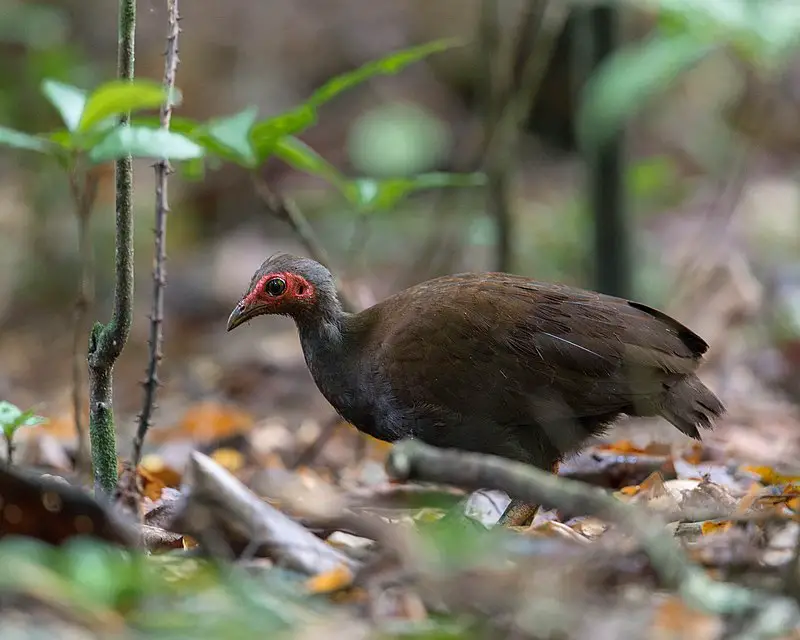
The Philippine Megapode is a species of bird found in the Philippines, northeastern Borneo and Sulawesi. It has an overall brown body colour with dark barring on its wings and tail feathers.
Its head is covered by light grey downy feathers while its legs are yellowish-orange in colour.
This ground dwelling bird prefers to inhabit subtropical or tropical dry forest, moist lowland forest as well as montane forests where it feeds on fruits, insects and small animals amongst other things.
As far as reproduction goes this species builds mound nests using materials such as leaves, twigs and soil which can reach up to four meters long.
They then lay their eggs within these mounds for incubation where the heat generated from decomposing vegetation helps keep them warm until they hatch a few months later into young chicks ready to explore their surroundings further.Scientific classification:
| Kingdom | Animalia |
| Phylum | Chordata |
| Class | Aves |
| Order | Galliformes |
| Family | Megapodiidae |
| Genus | Megapodius |
| Species | M. cumingii |
Also Featured In: Birds of the Philippines, Common Philippines Birds
2. Barred Rail
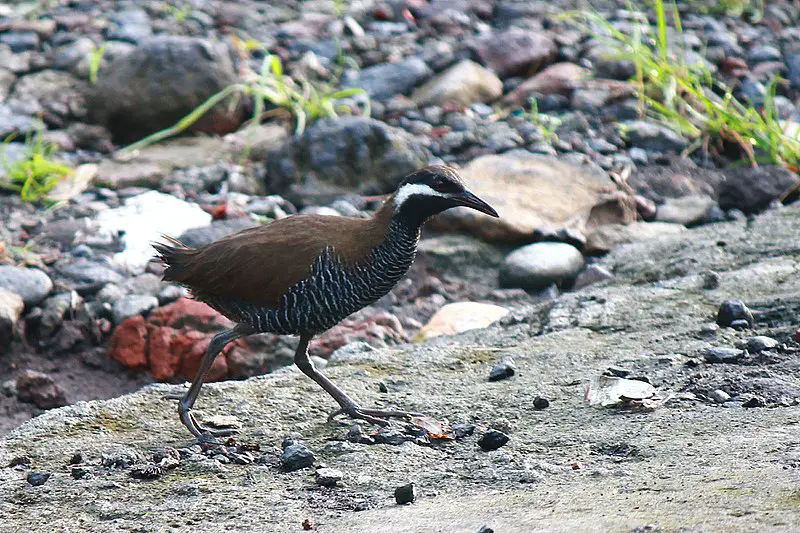
The Barred Rail is a species of rail found in the Philippines, Sulawesi and Salawati. It has distinct barred black and white feathers, making it easily identifiable.
This bird is common but shy, so it can be difficult to spot during its natural habitat. It prefers wet habitats such as marshes or rice fields that provide plenty of cover for them to hide from potential predators.
While their diet consists mainly of small invertebrates like earthworms and insects, they�ve also been known to feed on seeds and grains when food sources are scarce.
Though not endangered yet, human activity continues to reduce these birds’ already limited habitats across the region which may put them at risk if conservation efforts aren’t taken soon enough.Scientific classification:
| Kingdom | Animalia |
| Phylum | Chordata |
| Class | Aves |
| Order | Gruiformes |
| Family | Rallidae |
| Genus | Hypotaenidia |
| Species | H. torquata |
Also Featured In: Most Common Birds in Negros, Mindoro Birds You Should Know
3. Plain Bush-Hen
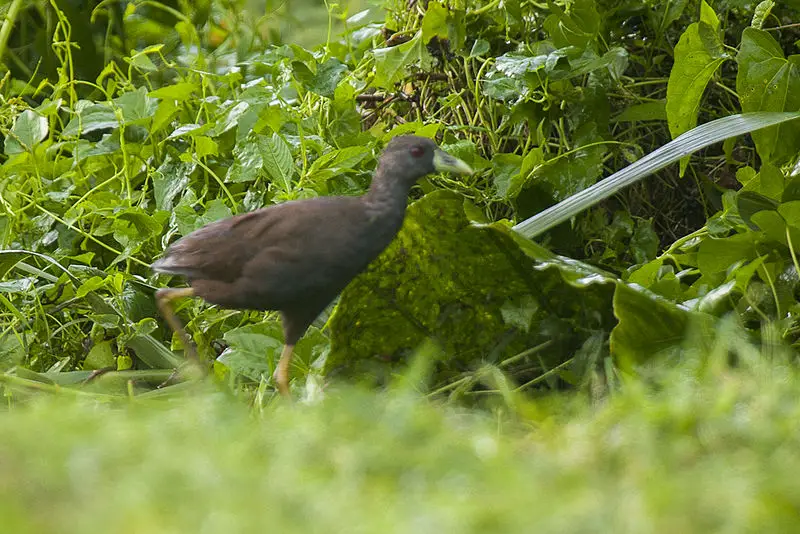
The Plain bush-hen is a species of bird in the Rallidae family, found only in The Philippines. It has an olive-brown color with pale yellow underparts and black barring on its wings, tail and head.
Its bill is short and thick while legs are long for wading through shallow water to find food like small invertebrates, seeds or fruits.
They usually stay close to bodies of water such as swamps or marshes where they can hide from predators by standing very still among tall grasses or vegetation when danger approaches.
During breeding season males attract females with loud calls repeated several times throughout the day which help them pair up easily but nest sites remain hidden since these birds build their nests low on ground next to dense bushes providing excellent camouflage against potential threats.Scientific classification:
| Kingdom | Animalia |
| Phylum | Chordata |
| Class | Aves |
| Order | Gruiformes |
| Family | Rallidae |
| Genus | Amaurornis |
| Species | A. olivacea |
4. Spotted Wood Kingfisher
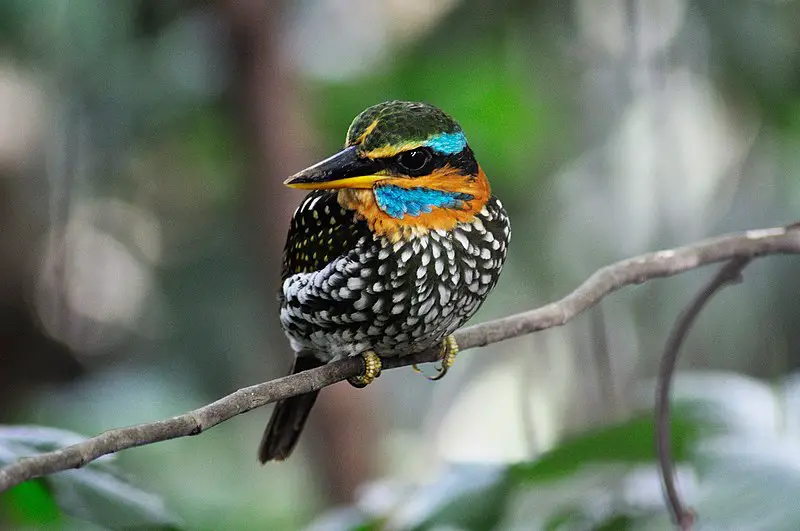
The Spotted wood kingfisher is an eye-catching bird native to the Philippines. It has a vibrant plumage of blue, black and white with distinctive spots on its wings and tail feathers.
This species stands out from other Philippine kingfishers due to its size; it measures around 10 inches in length.
The Spotted wood kingfisher lives mainly in subtropical or tropical moist lowland forests where they feed on fish, frogs and insects among others.
These birds are usually found near lakes, rivers or streams as they need water sources for hunting prey items which require diving into the water surface often times doing so multiple times per day.
Conservation efforts have been put forth by various organizations as this species population is threatened by deforestation caused by humans activities such as urbanization, logging etcScientific classification:
| Kingdom | Animalia |
| Phylum | Chordata |
| Class | Aves |
| Order | Coraciiformes |
| Family | Alcedinidae |
| Subfamily | Halcyoninae |
| Genus | Actenoides |
| Species | A. lindsayi |
5. Philippine Coucal
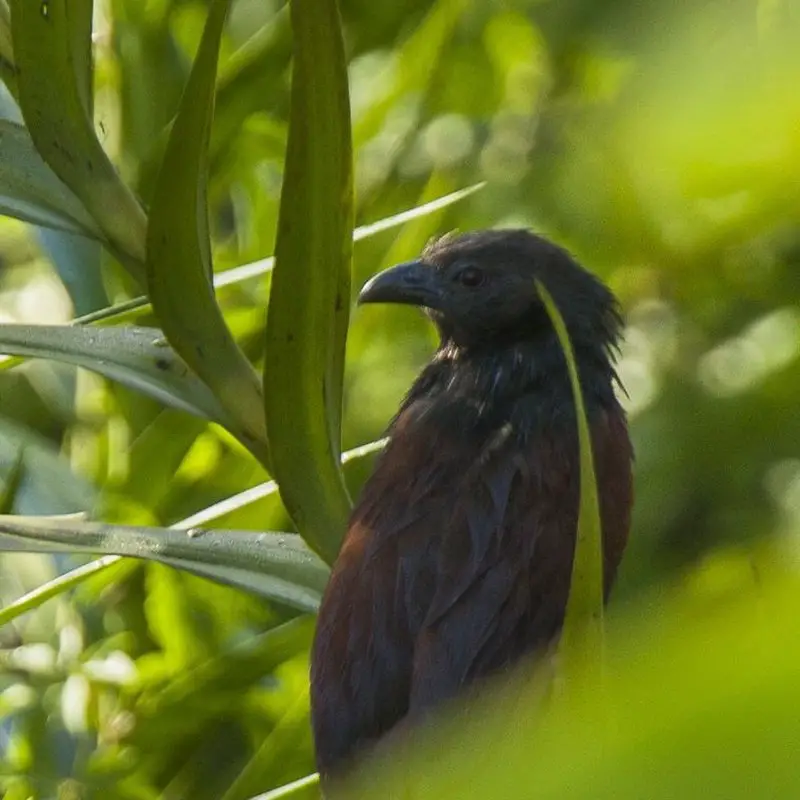
The Philippine coucal bird is a type of cuckoo found exclusively in the Philippines. This medium-sized bird has similar physical characteristics for both males and females, while different races of this species vary in color and size.
Some races, such as the carpenteri and mindorensis, appear completely black, while others like the viridis and majer display a black body with chestnut-colored wings. The carpenteri and majer variants are larger than viridis and mindorensis.
The viridis type possesses an overall black appearance, accented with a green sheen. As an endemic species, the Philippine coucal is only found in the Philippines, making it an important part of the country’s biodiversity.
Despite being a relatively lesser-known species compared to other birds, the Philippine coucal proves to be an interesting representative of avian life in the country.Scientific classification:
| Kingdom | Animalia |
| Phylum | Chordata |
| Class | Aves |
| Order | Cuculiformes |
| Family | Cuculidae |
| Genus | Centropus |
| Species | C. viridis |
Also Featured In: Mindanao Birds You Should Know, Samar Island Birds You Should Know
6. Grey-Backed Tailorbird
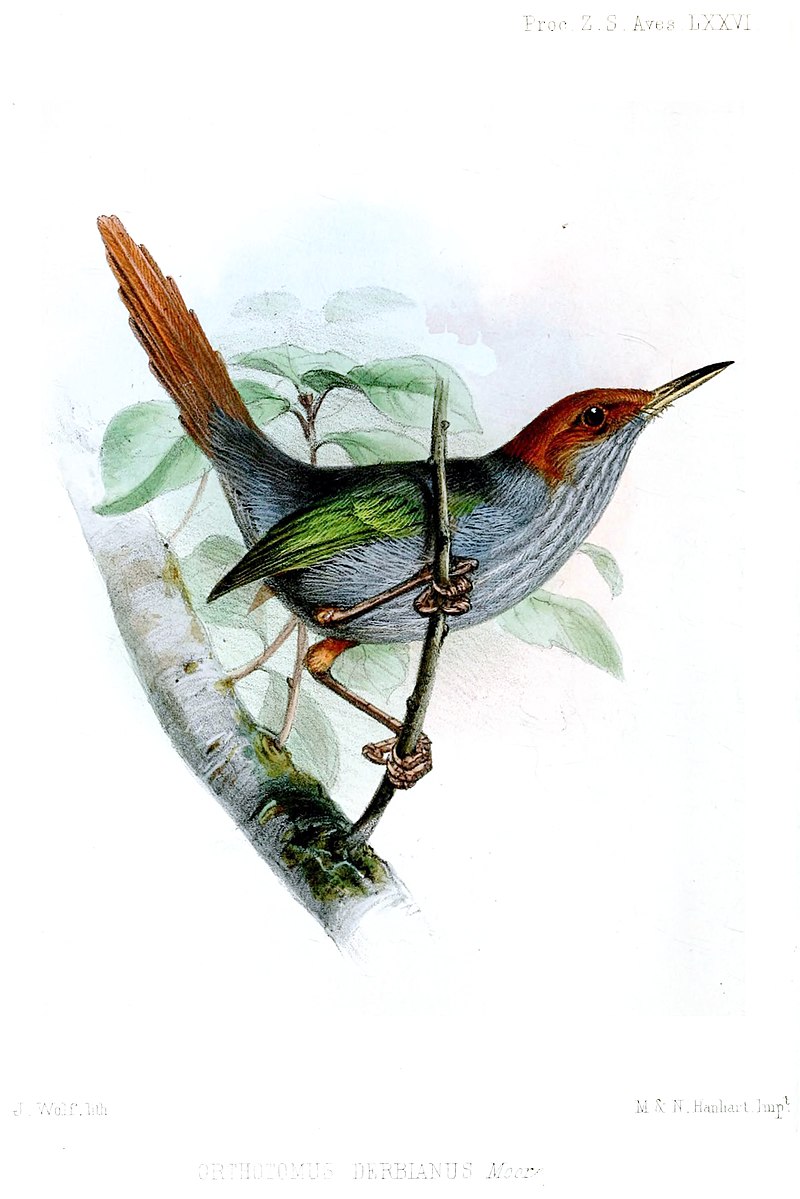
The Gray-backed Tailorbird is a Philippine bird that is found in several islands, including Palawan, Luzon, and Catanduanes.
This small bird has been reclassified into the family Cisticolidae, having formerly been considered part of the “Old World warbler” assemblage.
With its gray back and olive-green underside, the Gray-backed Tailorbird is a relatively drab but distinctive bird. Its compact size and agility make it well-suited to flitting through dense foliage in search of insects, its primary food source.
Like other tailorbirds, this species gets its name from its unique nest-building behavior, which involves sewing together leaves using spiderwebs or plant fibers.
Although not a particularly eye-catching bird, the Gray-backed Tailorbird is an important part of the biodiversity of the Philippine islands.Scientific classification:
| Kingdom | Animalia |
| Phylum | Chordata |
| Class | Aves |
| Order | Passeriformes |
| Family | Cisticolidae |
| Genus | Orthotomus |
| Species | O. derbianus |
Also Featured In: Palawan Island Birds,
7. Flaming Sunbird
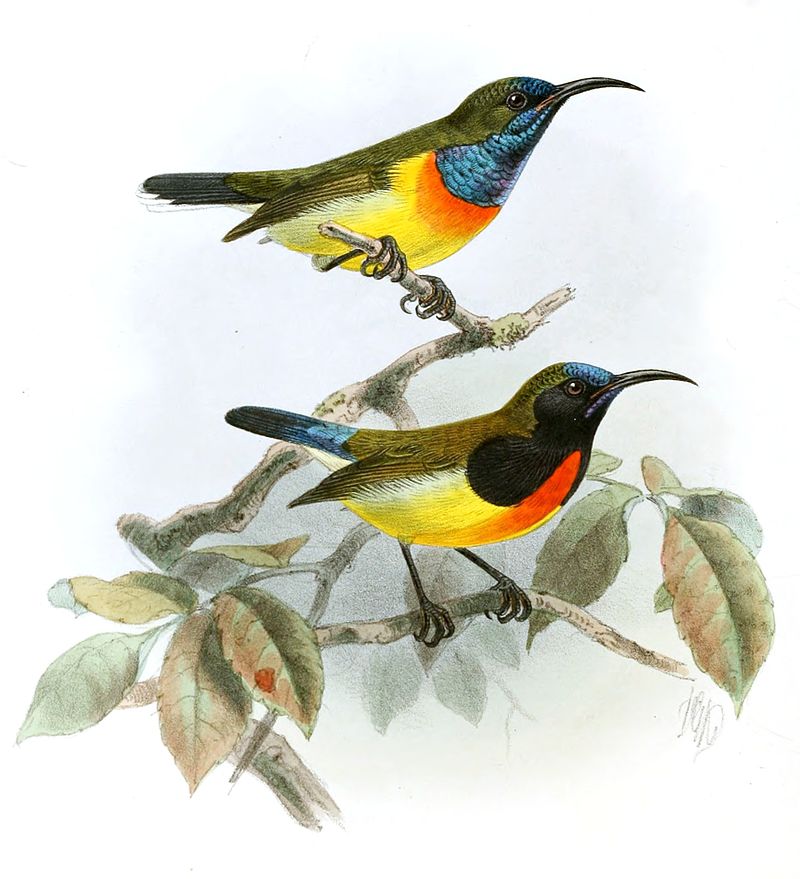
The Flaming sunbird, also known as Aethopyga flagrans, is an avian species found exclusively in the northern parts of the Philippines. This bird belongs to the Nectariniidae family and is known for its brilliant and attractive appearance.
Its natural habitat is in the subtropical or tropical moist lowland forests. The Flaming sunbird is a small, brightly colored bird with a long curved beak that helps it feed on nectar.
Its feathers are a striking red, orange and yellow color that makes it stand out in its habitat.
Due to its unique appearance and habitat, it is considered to be an endangered species. Efforts are being made to preserve the bird and its habitat so that future generations can enjoy the presence of this beautiful creature.Scientific classification:
| Kingdom | Animalia |
| Phylum | Chordata |
| Class | Aves |
| Order | Passeriformes |
| Family | Nectariniidae |
| Genus | Aethopyga |
| Species | A. flagrans |
8. Rufous Coucal
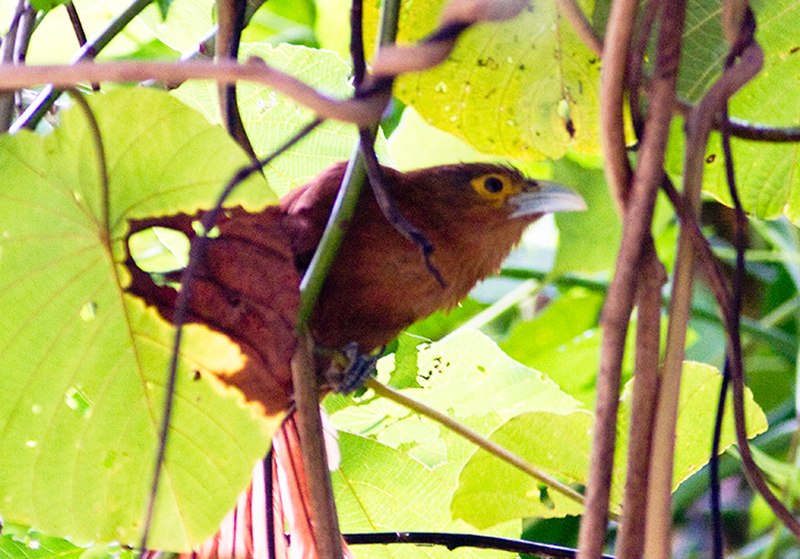
The Rufous coucal is a cuckoo bird that can be found in the Philippines, specifically in Luzon and nearby islands. These birds live in moist lowland forest regions and are threatened due to the loss of their natural habitat.
The Rufous coucal is known for its distinctive reddish-brown feathers and long tail, making it a beautiful sight in the forest. They are also known to be quite elusive, making it difficult to spot them in the wild.
Due to their threatened status, conservation efforts are needed to protect the Rufous coucal and ensure their continued presence in their natural habitat.Scientific classification:
| Kingdom | Animalia |
| Phylum | Chordata |
| Class | Aves |
| Order | Cuculiformes |
| Family | Cuculidae |
| Genus | Centropus |
| Species | C. unirufus |